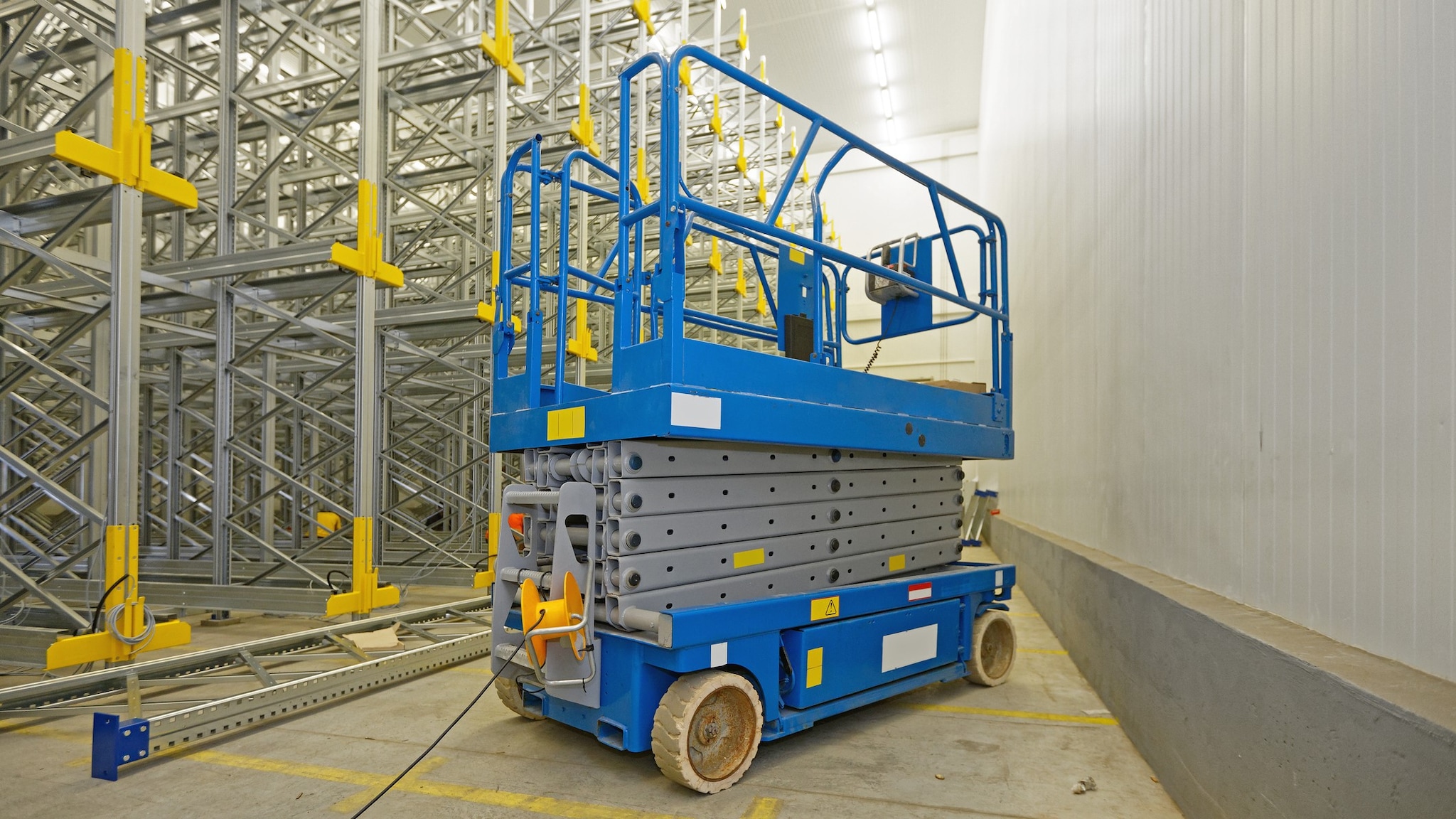Key points
- Aerial lifts raise workers to complete work-related tasks exposing workers to fall hazards.
- Using an aerial lift requires training.
- Proper safeguarding can reduce or eliminate aerial lift fall injuries.

Overview
Aerial lifts are powered mobile platforms that elevate workers to various heights. This exposes workers to fall hazards. The term 'aerial lifts' is an overarching term to capture multiple types of lifts like scissor lifts and boom lifts.
Some common tasks aerial lifts are used for include:
- Painting
- Drywall installation
- Maintenance
Aerial lifts are mobile. This makes aerial lifts easy to get to many jobsites with minimal setup time. For these reasons, aerial lifts are often used instead of scaffolding.
Aerial lifts are popular at various jobsites, including:
- Construction
- Telecommunication
- Warehousing
- General building maintenance
Other industries use aerial lifts to move materials, change lightbulbs, store boxes, and other tasks.
Facts
Slips, trips, and falls are the leading cause of death for construction workers. In 2022, slips, trips, and falls killed more than 400 U.S. workers.1
Between 2011-2014, 1,380 workers were injured as a result of operating an aerial lift or scissor lift. 360 of these injuries were a result of slips, trips, and falls from one level to another.2
Between 2011-2014, 87 workers died as a result of operating an aerial lift or scissor lift. 48 of these deaths were a result of slips, trips, and falls from one level to another.3
Safety risks
Aerial lifts are mobile, used as elevating equipment, and considered a restricted workspace. These aerial lift characteristics raise the risk of fall injuries.
Aerial lifts are used in a number of different conditions, such as adverse weather conditions and high-traffic, continually-changing worksites. These conditions create other hazards that expose workers to injury, including:
- Crushing/trapping hazards
- Electrocutions
- Tip overs
Best practices
Training is necessary for anyone using aerial lift work platforms and equipment.
Recommended safe work practices for aerial lifts are included in ANSI Standards and OSHA Requirements.
American National Standards Institute (ANSI) Standards
Occupational Safety and Health Administration (OSHA)
Note: Both OSHA and ANSI standards vary for different types of lifts.
What CDC is doing
In an effort to create awareness about common workplace hazards when using aerial lifts, NIOSH has developed educational tools and products. Employers, trainers, safety and health professionals, and aerial lift operators can use this information to prevent work-related falls.
Spotlight
NIOSH Aerial lift hazard recognition simulator
The Simulator is designed to help potential aerial lift operators acclimate to operation and identify the common occupational hazards during use. There are multiple hazards including depressions (potholes), crushing hazards, tip over hazards, etc.
Using the Simulator is not a substitute for required training to operate an aerial lift.
To launch the simulator
- Click on the Launch Aerial Lift Hazard Recognition Simulator button below to download the Simulator. Note: The files for the Simulator may take a few minutes to download.
- Click Open on the menu
- Double click LiftSimulator Application
- Click Extract All
- Click Browse to select or create a folder location on your computer's hard drive. Do not select a networked shared drive.
- Select "Extract" (one folder and one application file will download).
- Open the LiftSimulator Folder that was created.
- Double click Lift_Simulation Application to run the Simulator.
- If on a newer version of Windows 10, you may get a pop up stating that "Windows protected your PC." Click "More info" and then click "Run anyway."
- Enable the audio on your computer. Directions are provided audibly.
- Select which Aerial Lift Simulation you would like to play!
To use the simulator
- Select the screen resolution and graphics quality if needed by clicking "Settings" in the menu.
- Once launched, you the will be prompted to position the lift in the appropriate area while avoiding hazards.
- To maneuver the lift use your keyboard. Press "h" if you require assistance.
- Follow the green arrows and align the lift with the transparent platforms visible at various locations in the work area.
- You will be notified when you have reached each target area successfully.
- To finish the scenario, park the lift at the final location.
Resources
Gerneral
Pan C.S., Chiou, S., Kau, Y., Wimer, B., X. Ning, and Keane, P. (2017) "Evaluation of Postural Sway and Impact Forces during Ingress and Egress of Scissor Lifts at Elevations," Applied Ergonomics, 65, pp. 152-162.
Pan C.S. (2016) "NIOSH Aerial Lift Safety Research and Practice," Hsiao, H. (Editor), Fall Prevention and Protection: Principles, Guidelines, and Practice, Chapter 16, pp. 271-290.
- Us Department of Labor, Bureau of Labor Statistics TABLE A-1. Fatal occupational injuries by industry and event or exposure.
- US Department of Labor, Bureau of Labor Statistics Survey of Occupational Injuries and Illnesses (nonfatal data).
- US Department of Labor, Bureau of Labor Statistics Census of Fatal Occupational Injuries query system (fatal data).
